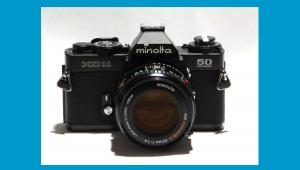Harman Technology To Develop New Fine Art Paper, Ideal For Lith Printing

Steven Brierley, HARMAN’s President of Marketing explains: “Through its ILFORD PHOTO brand, HARMAN technology is committed to being the best and if necessary, the last, in black and white. As the use of analog photography for commercial purposes dwindles many manufacturers are pulling out of the market, leaving those dedicated to niche areas of photo expression such as lith printing in an extremely precarious position.
“HARMAN technology however recognizes the artistic importance of these non-mainstream types of photography and processing, and that’s why we are working to develop this new paper no matter how difficult it might be. Essentially it’s just another part of our Defend the Darkroom campaign which aims to safeguard the future of darkrooms and associated creative techniques, while showing how traditional analog and digital photography can co-exist.”
The biggest product development challenge currently faced by HARMAN stems from the fact that this kind of fine art paper has nothing to do with technology and everything to do with hand art and long forgotten skills. Whilst its state-of-the-art production plant in Cheshire, England is geared to grow emulsion crystals in a controlled and uniform way to ensure exceptional batch-to-batch product consistency for its mainstream products, fine art papers actually demand the exact opposite, requiring emulsion crystals that vary in shape and size. As such, HARMAN effectively needs to identify how to reverse engineer the paper.
As part of the development process, HARMAN is currently seeking input from key users of fine art papers including master printers, famous photographers and photo-educators involved in teaching alternative methods of processing. Steven Brierley continues: “These experts will be instrumental in helping us to determine the ideal specification for our new product in terms of paper surface, grade range, base color, resultant image color and a whole host of other attributes. After all, no one is better placed to advise on what the perfect fine art paper should deliver than the people who actually use these products on a regular basis.”

















































